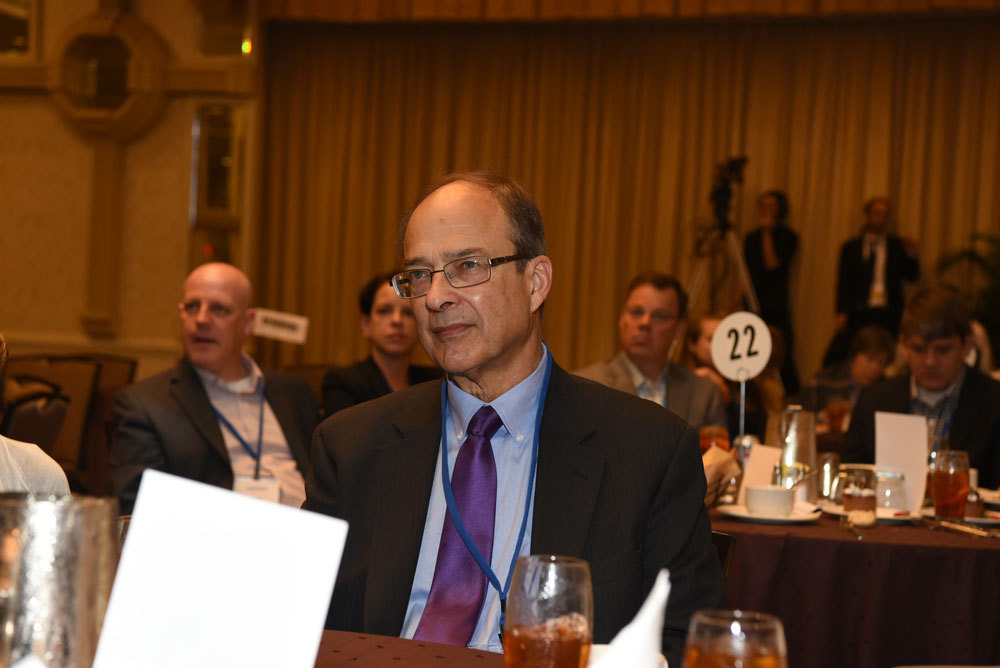When Jim Jacobs was studying for his PhD in the early 1960s, Princeton University’s Department of Politics had a weekly sherry hour. The scholars—all men—wore their academic robes as they mingled, nursing their tiny glasses.
For Jacobs, a working-class son of a Linotype operator from Brooklyn, it was strikingly different from the world he came from.
“Growing up in Brooklyn, one, we didn’t drink sherry, and certainly we didn’t hold onto it for a whole hour,” Jacobs said.
While Jacobs appreciated the opportunity to study with great scholars on full scholarship, he was more interested in activism against the Vietnam War and for civil rights and economic opportunity for the working class. Once his coursework was done, he began working with a local chapter of the Students for a Democratic Society (SDS), a student activist organization, in Ann Arbor, Michigan.
Though he knew little about community colleges, he began teaching night classes part-time at Macomb Community College in Warren, Michigan, north of Detroit. A year later, in 1968, he got a job teaching at Macomb full-time and moved to Detroit.
Fifty-five years later, Jacobs is retiring for a second time. In 2017, he ended a nine-year run as president of Macomb, and this summer he decided to take a step back from his research career, which for several decades has paralleled his teaching and administrative career at Macomb.
Jacobs’s Legacy With CCRC
Jacobs, who was CCRC’s associate director from 2000 to 2008 and a member of the CCRC Advisory Board from 2008 to 2017, has contributed to several CCRC projects on workforce education, bringing expertise he developed working on industrial development and adult education programs at Macomb and in the Detroit region.
Tom Bailey, CCRC’s founding director and now the president of Teachers College, where CCRC is based, said Jacobs’s involvement gave CCRC credibility and helped build trust with the field.
“Jim Jacobs was integral to CCRC from the very beginning,” he said. “He helped us develop our vision and brought contacts to bear on our work from all over the field. This was just crucial, and helped us bridge what could have been a huge divide between researchers and the community colleges we studied.”

Jacobs with Tom Bailey
In the early years of CCRC, after the center received its first grant from the Alfred P. Sloan Foundation in 1996, Jacobs introduced Bailey to important community college presidents and helping frame CCRC’s approach to the research.
“CCRC emerged as an organization that was independent from community colleges, certainly willing to be constructively critical of what the colleges were doing, but also—and I think this is very important—empathetic to what they were doing,” Jacobs said. “And nobody at that point had all those three things together.”
At the time, community colleges were starting to get more national attention, Jacobs said, but they were still marginalized and often defensive after years of attacks. Academics were skeptical that community colleges could succeed at their multiple missions of preparing students for transfer and for the workforce. Some thought community colleges served to lower students’ aspirations. As someone who had worked at a community college, Jacobs knew how wrong they were.
“The issue was how do you make the colleges better so that they could develop that opportunity for people,” he said.
Jacobs’s Introduction to Community Colleges
Jacobs’s focus on the workforce side of community colleges started early in his career at Macomb. He was initially assigned to teach political science, but when the social science division ran out of money, he was reassigned to basic education. The program he landed in was designed for undecided students and had a lot of the elements now considered important for student success, including a full-time enrollment requirement, block scheduling, student cohorts, team teaching, and other innovative teaching strategies.
“In this program, you got to really get into what’s the purpose of education, and one of the purposes was employment,” he said.
In the mid-1980s, Jacobs became a visiting scholar at the Industrial Technology Institute (ITI) in Ann Arbor. The Institute was trying to get the auto industry up to speed with computer technology. The work taught Jacobs about technology and how it was being implemented, the role of skill development in the workforce, and how community colleges could contribute.
“I learned for the first time about my own college, how important Macomb was in that area,” he said. The college educates huge majorities of the area’s firefighters, police, nurses, and medical technicians. Many small business owners and auto manufacturing apprentices also have Macomb degrees, he said.
Working at the ITI also taught Jacobs about winning grants, working in multidisciplinary research teams, and building research projects. Jacobs became active in community college workforce circles as a researcher focused on technology and how community colleges could improve their programs.
Jacobs expanded his contacts in community college workforce and research circles when the president of Macomb, Albert Lorenzo, created a network of community colleges—the Mid-America Training Group—to work with industry to improve their workforce programs. That eventually led him to meet Tom Bailey, then a Teachers College professor working in the college’s Institute on Education and the Economy and now the president of Teachers College.
Jacobs’s Connection to CCRC
When CCRC got its first grant from Sloan, one of the conditions was that a community college person be involved. Bailey called to ask if Jacobs was interested. By then he was part of the college administration focusing on school-to-work issues and running the machinist training center. He was also president of the administrative union. He began long-distance commutes to CCRC, which was soon made up of about seven or eight researchers.

As associate director, Jacobs worked on the center’s early workforce education studies and helped built its connections to the field. But he didn’t only want to be a researcher. So when Lorenzo announced that he would retire from Macomb’s presidency in 2008, Jacobs applied for the job.
“I had learned a lot at CCRC, but I also wanted to use it,” he said.
As he implemented ideas from the research—such as better integrating the credit and noncredit sides of the college—Jacobs continued working on projects at CCRC, including studies on employer perceptions of associate degrees in technology fields and on how community colleges respond to technology innovation. He also continued to contribute to debates on community colleges’ role in workforce development.
Looking forward, Jacobs said he thinks community colleges should focus on fewer workforce programs that better prepare students to learn on the job. At the same time, colleges need to become better advocates for their students with the businesses that are hiring them—and make sure students have a seat at the table—moving away from the transactional approach to college–business relationships.
Reflecting on his path from Brooklyn to Princeton to Detroit, Jacobs said it’s clear that students need family support and need to be motivated to advance. But that’s not enough on its own. Opportunities like the ones he had to attend great public schools—including New York City’s prestigious Stuyvesant High School and Harpur College, now Binghamton University, SUNY—need to be available.
“Having institutions that can actually produce opportunity is very, very important,” he said. “And, in a sense, that’s why I think community colleges are important. They’re one of those institutions.”





